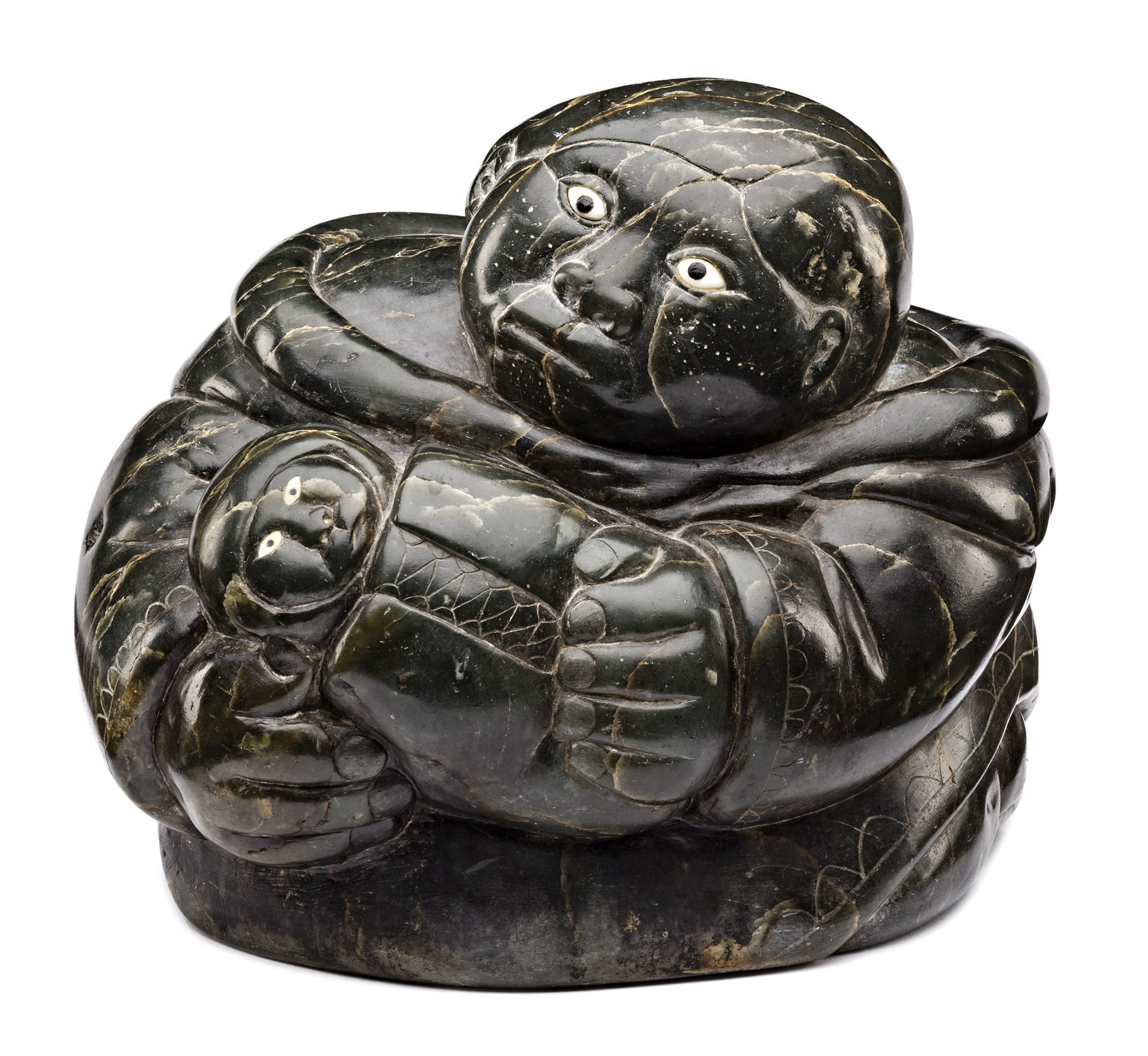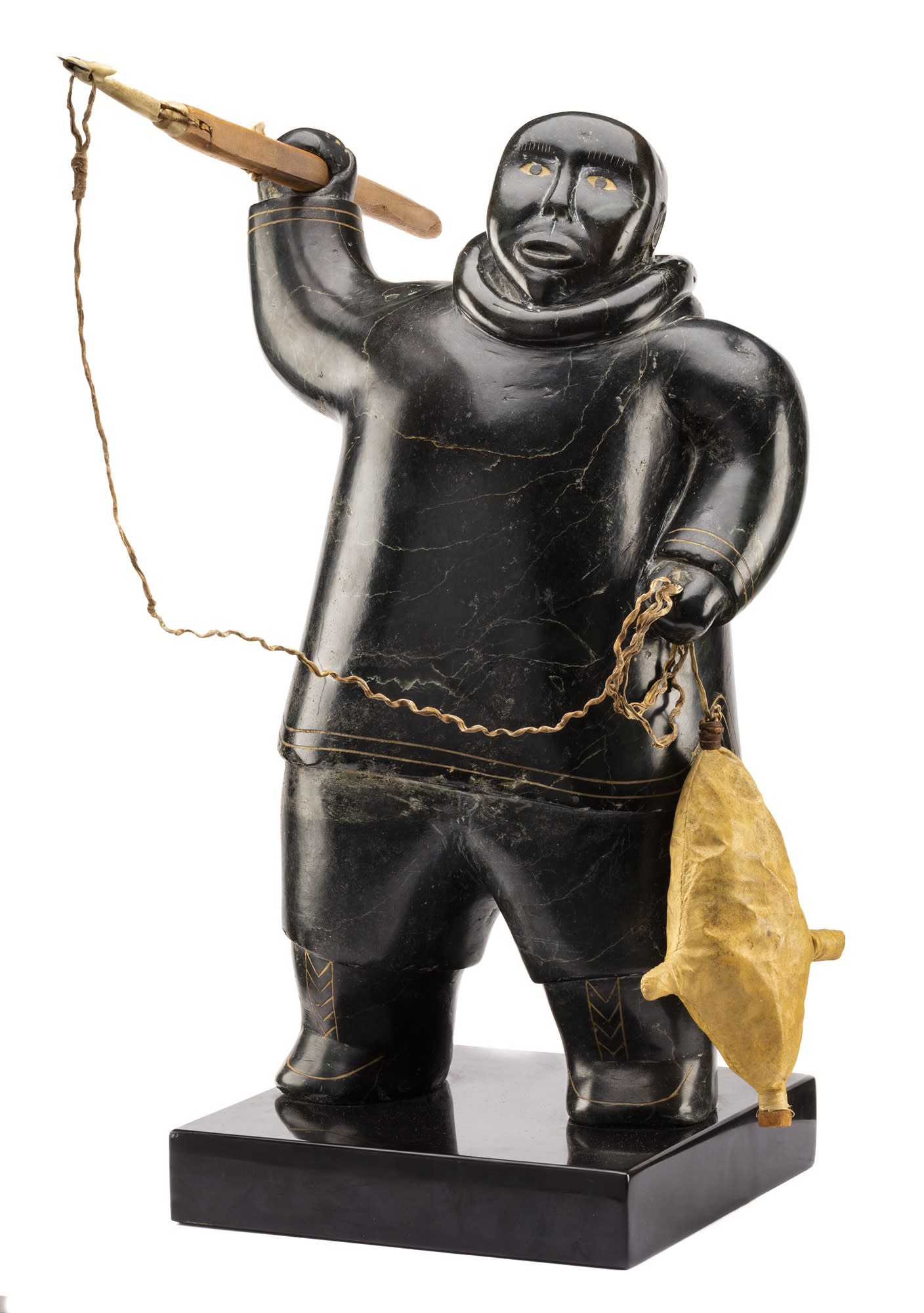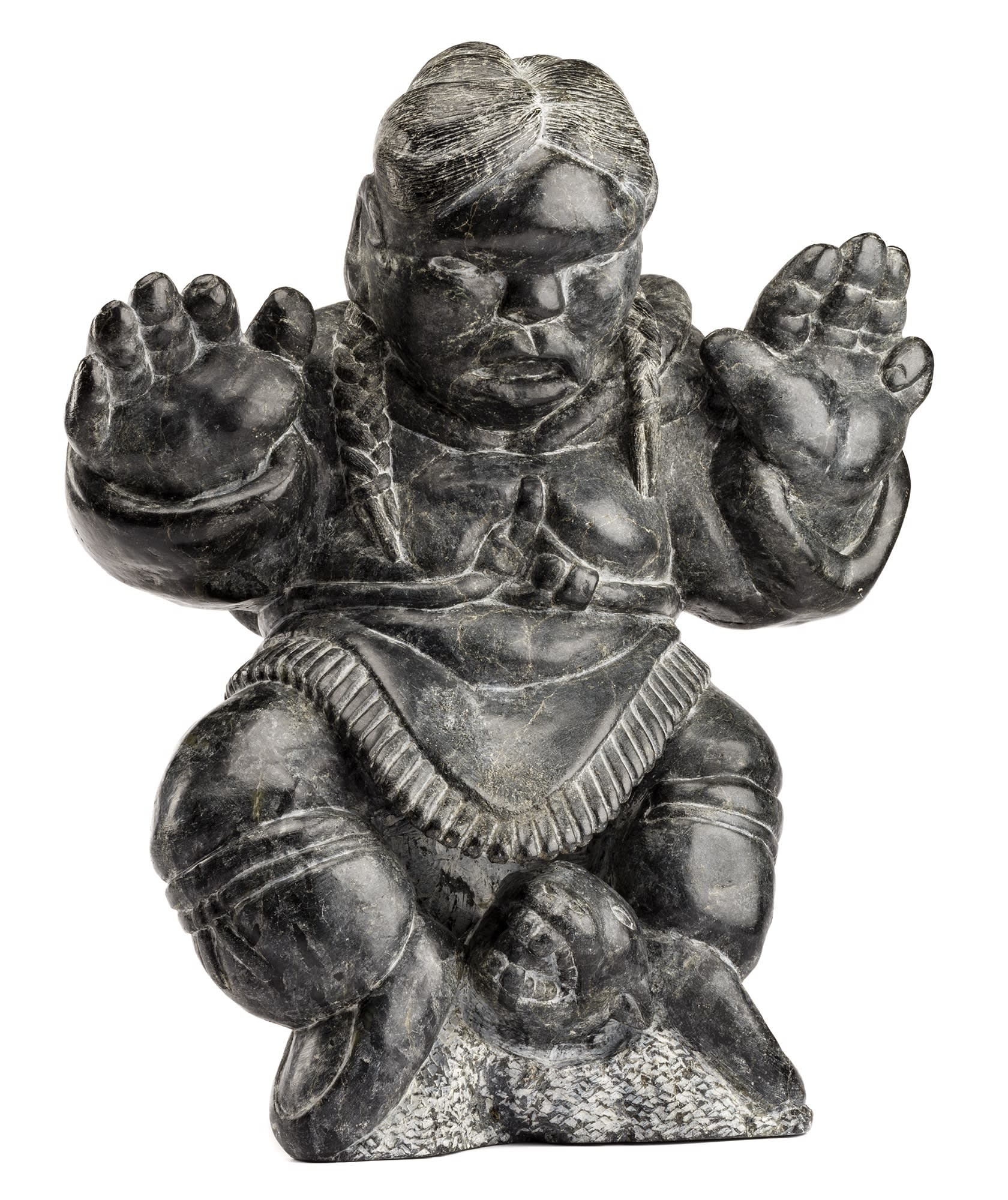The famous sculptor Johnny Inukpuk (1911–2007) began carving in Inukjuak around 1950. A newcomer to the area, having only just moved there from the region around Kuujjuarapik, he was one among many Inuit looking for opportunities. Serendipitously, he received the encouragement and resources that enabled him to become one of Inuit art history’s stand-out artists.
His very earliest carvings were marked by drilled eye sockets which later were replaced with inlay of ivory, stone, and sometimes melted-down vinyl records. By as early as 1953 he began creating highly distinctive rotund figures, often carved from the beautiful, polishable dark green Inukjuak stone which Darlene Coward Wight has described as “characterized by pronounced translucent layers that glow in the light and by gold patches that enhance this opalescent effect" [1]. These early masterpieces are among Inukpuk’s most fascinating works, due to a combination of the exaggerated proportions of his figures, their facial expressions, and the gorgeous opalescent stone that has come to be synonymous with early Inukjuak sculpture.
Already by the late 1950s Inukpuk had begun a period of experimentation, and by 1960 the artist had developed the sculptural style for which he is best known. The beautiful dark green veined stone was no longer available – Inukpuk’s colleague Paulosie Kasadluak commented in 1976 that “the stone is never the same” [2] – and finely textured grey or black stones came into common use [3]. Inukpuk continued to exaggerate the proportions and features of his figures, but he favoured a new naturalism of style, and often a considerable increase in scale. His preferred themes of mother and child, hunting, and domestic chores carried through, yet Inukpuk’s newer works played with narrative in dynamic and exciting ways. Often, these sculptures offered an exceptional composition from every angle, sometimes even involving optical trickery.
Some of Inukpuk’s greatest works were created between 1960 and 1970. The Inukjuak co-operative began purchasing carvings in 1965, providing artists with an additional outlet for their work. Remarkably, Johnny Inukpuk carved steadily almost until his death in 2007, albeit it on a smaller scale, but the consensus today is that his most significant works hailed from the first two decades of his career.
First Arts is proud to offer several masterpieces by Inukpuk in this sale from the 1950s and 1960s. These include one unusual and fascinating sculpture from the late 1960s; two extraordinary works firmly attributed to the artist from the 1950s; and a third masterwork from the 1950s possibly carved by him. Together they represent the remarkable evolution of Inukjuak sculpture in the early decades of Inuit art.
Endnotes
1. Darlene Coward Wight, Early Masters: Inuit Sculpture 1949-1955, (Winnipeg: Winnipeg Art Gallery, 2006), p. 84.
2. Paulosie Kasadluak quoted in Jean Blodgett et al., Port Harrison/Inoucdjouac, (Winnipeg: Winnipeg Art Gallery, 1976), p. 15.
3. Darlene Coward Wight, Creation and Transformation: Defining Moments in Inuit Art, (Winnipeg: Winnipeg Art Gallery: 2012), p. 67.

Lot 39
JOHNNY INUKPUK, R.C.A.
Mother Holding a Swaddled Infant, c. 1953-54
stone, ivory, and black inlay, 9 x 9 x 12 in (22.9 x 22.9 x 30.5 cm)
ESTIMATE: $30,000 — $50,000

Lot 79
ATTRIBUTED TO JOHNNY INUKPUK, R.C.A.
Harpoon Hunter, c. 1955-57
stone, wood, antler and hide, 23.5 x 13 x 24 in (59.7 x 33 x 61 cm)
ESTIMATE: $18,000 — $28,000

Lot 94
JOHNNY INUKPUK, R.C.A.
Girl and Bear, c. 1967-70
stone, 17 x 14.5 x 6.5 in (43.2 x 36.8 x 16.5 cm)
ESTIMATE: $25,000 — $35,000
